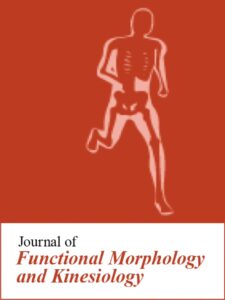Publications

Does Radial Extracorporeal Shockwave Therapy Applied to the Achilles Tendon Influence Ankle Functionality?
Authors: Younglan Joo 1, Wonjae Choi 2, Jihye Jung 3, Hyunjoong Kim 4, Sungeon Park 5, Sangbong Lee 5, Seungwon Lee 3, 6
Affiliations:
- Minimal Pilates & Move, PH 24, UN Village-gil, Yongsan-gu, Seoul 04420, Republic of Korea
- Department of Physical Therapy, Joongbu University, 201, Daehak-ro, Chubu-myeon, Geumsan 32713, Republic of Korea
- Institute of SMART Rehabilitation, Sahmyook University, 815, Hwarang-ro, Nowon-gu, Seoul 01795, Republic of Korea
- Department of Senior Exercise Prescription, Gwangju Health University, 73, Bungmun-daero 419beon-gil, Gwangju 62287, Republic of Korea
- Department of Physical Therapy, Graduate School, Sahmyook University, 815, Hwarang-ro, Seoul 01795, Republic of Korea
- Department of Physical Therapy, Sahmyook University, 815, Hwarang-ro, Seoul 01795, Republic of Korea
Journal: Journal of Functional Morphology and Kinesiology - April 2024, Volume 9, Issue 2, Article no. 67 (DOI: 10.3390/jfmk9020067)
-
Field & Applications:
- Medical
- Sport
- Treatment evaluation
- Recovery from injury
- Achilles tendon stiffness was assessed using the MyotonPRO device, a sophisticated tool designed for the noninvasive evaluation of muscle and tendon properties.
- The MyotonPRO is widely recognized for its ability to accurately measure muscle stiffness, which is defined as the resistance of a muscle tissue to external forces.
This study aimed to determine the effectiveness of radial extracorporeal shockwave therapy (rESWT) in enhancing ankle function in patients with Achilles tendon injuries. The choice of rESWT was based on previous success in the treatment of musculoskeletal conditions. The study involved an intervention group that received rESWT, and a control group that received sham therapy.
The results revealed that rESWT led to significant improvements in single-leg vertical jump (d = 0.55, p < 0.05), indicating enhanced power generation and ankle functionality that were not observed in the control group. Additionally, the therapy resulted in increased ankle mobility, as observed by improvements in plantar flexion and heel-rise tests. Interestingly, these functional gains were not accompanied by changes in the Achilles tendon stiffness, suggesting that the benefits of rESWT may be more functional than structural.
This study highlights rESWT as a promising tool for rehabilitation, particularly following Achilles tendon injuries. The study concluded that, although rESWT appears to improve certain aspects of ankle function, further studies with a larger and more diverse population over a longer period are necessary to confirm these findings and establish comprehensive treatment protocols.
Keywords: radial extracorporeal shockwave therapy, Achilles tendon, range of motion, physical therapy
This study suggests that rESWT has a promising role in enhancing ankle functionality, which can be integrated into rehabilitation practices. The therapy showed benefits in improving plantar flexion and heel-rise, indicating its potential to positively affect lower limb recovery. However, further studies are necessary to fully establish the long-term efficacy and optimal application of rESWT in clinical settings, particularly with larger and more diverse sample sizes over a longer period.


